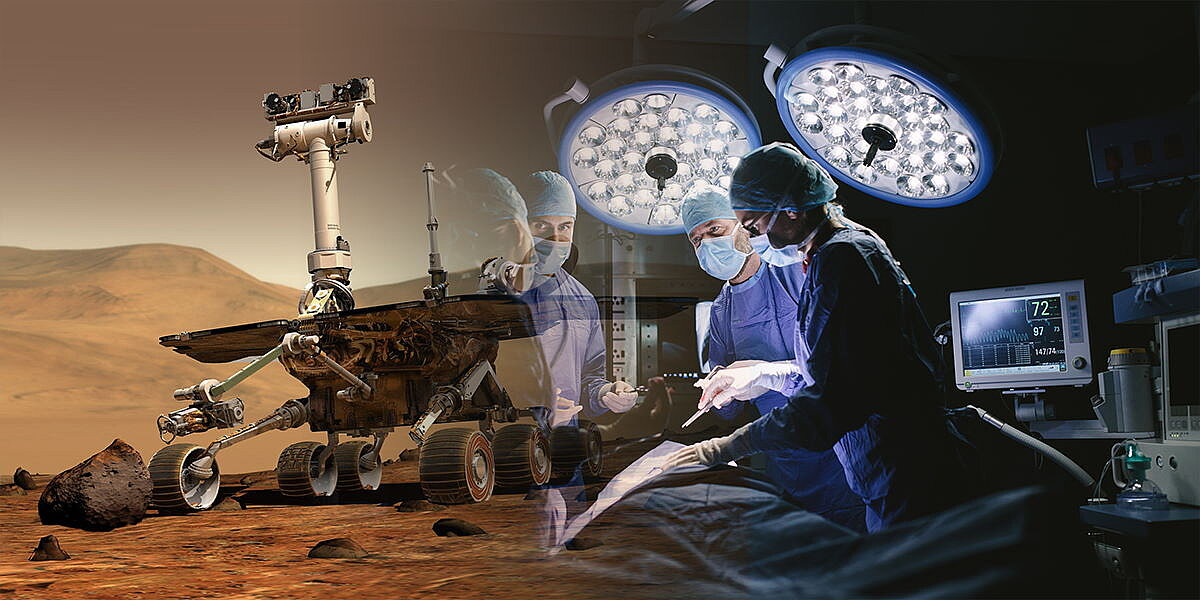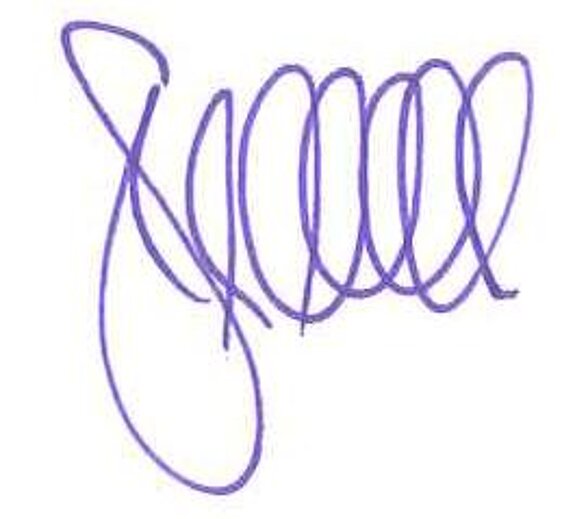What do operating rooms have in common with landing on Mars?

How can you ensure that dust and bacteria don't end up where they can do harm?
At first glance, a modern operating room and space travel have nothing in common. We are reluctant to spend time in the former, and ticket prices are still prohibitive for the latter.
At second glance, however, there is an important commonality.
When assembling satellites, it is essential to avoid particles getting to sensitive optics and sensors, because in space, cleaning options are very limited. Extraterrestrial land missions on Mars, such as Perseverance or ExoMars, also have to meet extreme requirements for virus and bacteria purity. Consequently, there may be a maximum of one virus or bacterium per 0.1 m² in the "heart". That is not much.
Even in the operating room, the smallest dust particles, bacteria or viruses are absolutely undesirable. Otherwise, contamination of the open wound could occur, with serious consequences.
We'll take a closer look at how this can be solved in an operating room below.
The air that comes into contact with the patient must be absolutely clean. This can be achieved using high-performance air filters, e.g. HEPA H14. But how do you ensure that the filtered air arrives exactly where it is supposed to?
This is a typical task of flow simulation.
The basic goal of cleanroom concepts is to create a clean environment and, during operation, to maximally reduce the transfer of contamination to the object to be protected (a mirror or a patient) through optimized airflow. Design and arrangement of equipment and personnel are primarily based on empirical values and point-by-point measurements.
In a cooperation between Merkle & Partner and OHB System AG and HT Group, CFD simulations were applied to relevant rooms of these two industries. First results show the power of CFD simulation in terms of better understanding, risk reduction as well as optimization of operational concepts.
We were very curious to see what our CFD simulation would show for the recalculation of an air purification concept of the company HT-Group in operating rooms. After all, we are talking about human lives here, which are possibly closer to us than a possible bacterial carpet on Mars or a Hubble telescope with a dirt spot on every image.
It is remarkable how well the ventilation concept of the examined operating room works in this case with the help of a low-turbulence displacement flow (TAV flow): The filtered air forms a curtain around the patient and there is hardly any turbulence. Only a minimal swirl can be seen under the table. The air is extracted evenly at the base near the floor. No eddies form there either, which could stir up dirt particles from the floor.
It is true that the TAV flow is still ideal-typical, since, for example, the examination lights are not swiveled in and the operator and nurses are not only standing in the laminar air flow, but are themselves also sources of heat and aerosols and particles. However, this is also taken into account in extended models.
Not all requirements are as high as in the operating room. Whether it is fires, the spread of pollutants and viruses, or simply the air conditioning of rooms: CFD simulation can be used to check whether everything is working as it should, or whether optimization measures are required.
Seeing what is otherwise invisible is the strength of CFD simulation. Measurements of the smallest air flows are usually very complicated and involve a lot of measurement effort. Therefore, it is often difficult to determine measures for air pollution control, the dispersion of pollutants or the spread of aerosols and viruses experimentally. CFD simulation, however, makes this possible with little effort.
The highly interesting added value from the simulation approach for space travel, as well as for medical applications, lies in the visualization of devices, persons and motion sequences. New evaluation approaches and optimization possibilities can be derived from this.
Are you curious?
We would be happy to provide you with non-binding information on what we can do for you in your specific application.
Send a short mail via the contact form, gladly with the subject "OR" or "Cleanroom".

PS: The topic is also interesting in connection with the dispersion of aerosols. For this we will show examples in the near future how well measurement and simulation fit together.
